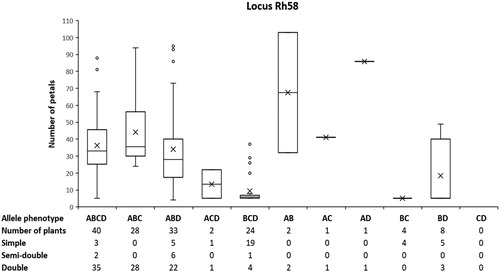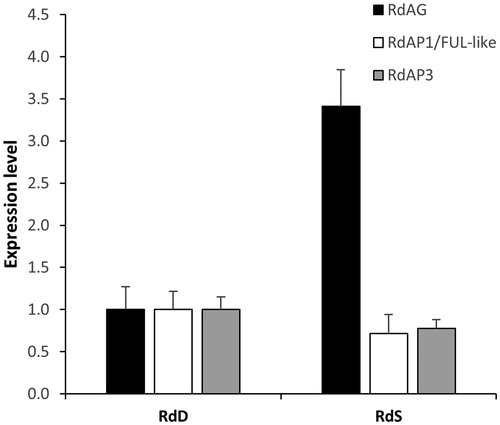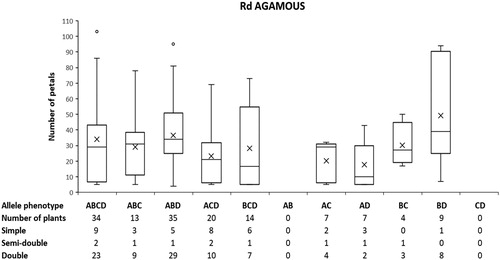Figures & data
Table 1. Primers used for analysis of expression of flower homeotic genes in early stages of flower development in Rosa x damascena by qPCR.
Table 2. Primers used for analysis of microsatellite loci.
Table 3. Flower biometric analysisTable Footnote* of plants obtained after self-pollination of Rosa x damascena f. trigintipetala.
Figure 1. Variation in flower morphology in plants obtained after self-pollination of Rosa x damascena Mill. f. trigintipetala. Simple flower (a), semi-double flower (b), double flower (c and d).

Figure 2. Box-and-whiskers plot showing the distribution of data for number of petals among plants with different allele phenotype of the microsatellite marker Rh58 in plants from a segregating population obtained after self-pollination of Rosa x damascena f. trigintipetala. A, B, C and D designate the scored allele sizes (A = 222 bp, B = 228 bp, C = 248 bp and D = 260 bp).

Figure 3. Expression level of Rosa x damascena AGAMOUS (RdAG), R. x damascena APETALA1/FUL-like (RdAP1/FUL-like) and R. x damascena euAPETALA3 (RdAP3). RdD, early stage flower buds of R. x damascena f. trigintipetala with double flowers. RdS, early stage flower buds of a simple flower plant (6 ± 1 petals) obtained by self-pollination of R. x damascena f. trigintipetala.

Figure 4. Box-and-whiskers plot showing the distribution of data for number of petals among plants with different allele phenotypes of Rosa x damascena AGAMOUS in a segregating population of 143 plants obtained by self-pollination of R. x damascena f. trigintipetala. A, B, C and D designate the 4 different alleles of R. x damascena AGAMOUS scored by using the AGM2 primer pair (A = 147 bp, B = 153 bp, C = 155 bp and D = 163 bp).

